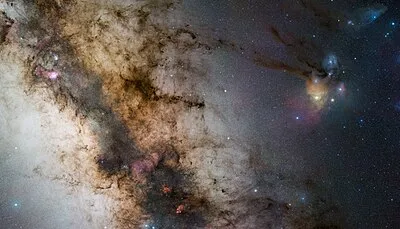14029,89%0,01
42,95% 0,08
50,53% 0,03
5965,27% 0,22
9931,63% 0,00

The Milky Way Galaxy, our home galaxy, is a vast and complex structure comprising billions of stars, planets, and other celestial bodies. Spanning approximately 100,000 light-years in diameter, it is classified as a barred spiral galaxy, characterized by its spiral arms and a central bar-shaped region of stars.
One of the most fascinating aspects of the Milky Way is its size and composition. Estimates suggest that it contains between 100 billion and 400 billion stars, along with a significant number of planets, many of which may harbor conditions suitable for life. The galaxy also includes a variety of cosmic phenomena, such as nebulae, star clusters, and black holes, contributing to its dynamic nature.
The Milky Way is not static; rather, it is constantly evolving. It is engaged in a gravitational dance with neighboring galaxies, including the Andromeda Galaxy, which is projected to collide with our galaxy in approximately 4.5 billion years. This event will significantly alter the structure of both galaxies, leading to a new formation of stars and celestial bodies.
Another noteworthy feature of the Milky Way is its central supermassive black hole, known as Sagittarius A*. This black hole has a mass equivalent to about 4 million times that of our Sun and plays a crucial role in the dynamics of the galaxy.
In summary, the Milky Way Galaxy is a remarkable cosmic entity that continues to captivate astronomers and enthusiasts alike. Its intricate structure, vast scale, and dynamic nature provide a wealth of opportunities for exploration and discovery, making it a focal point of astronomical research. As our understanding of the universe expands, the Milky Way remains a key subject of study, offering insights into the formation and evolution of galaxies across the cosmos.

Veri politikasındaki amaçlarla sınırlı ve mevzuata uygun şekilde çerez konumlandırmaktayız. Detaylar için veri politikamızı inceleyebilirsiniz.